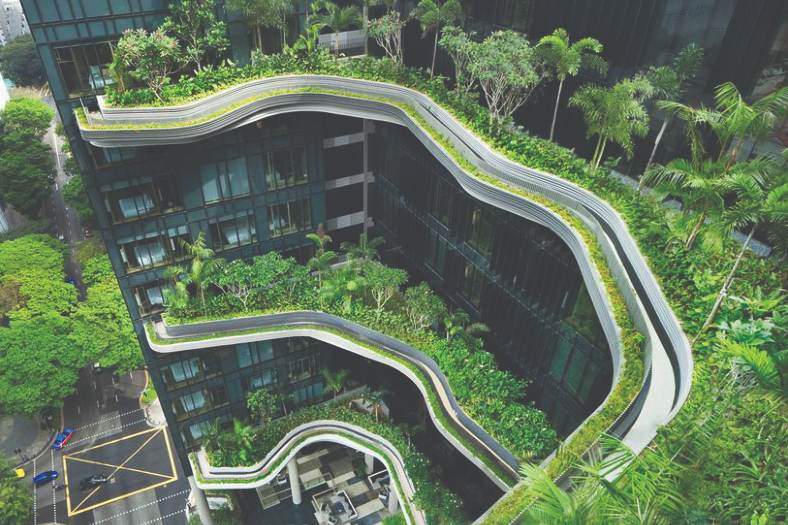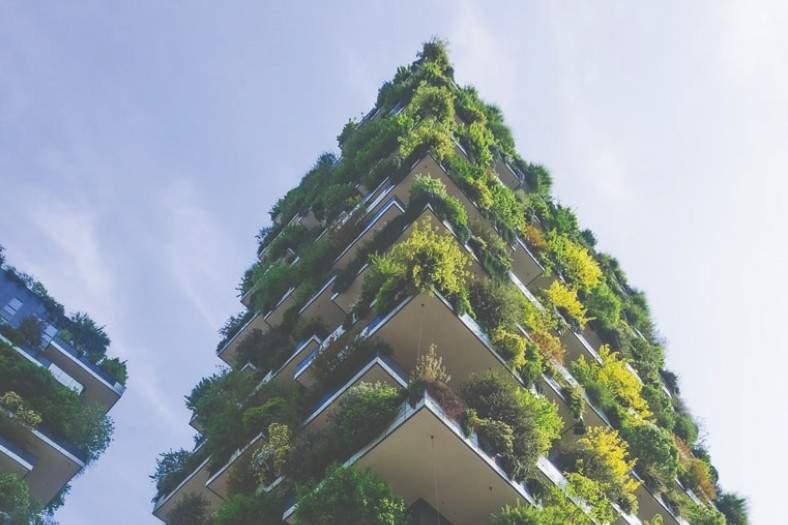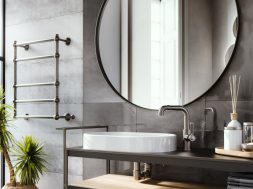A Tall Order

Making high-rises and super structures sustainable may seem to be a herculean task but thanks to modern day innovations in construction, architecture and design, it is achievable.

India is about 2.9 times smaller than China which is the most populous country in the world. Experts also predict that India will overtake China as the most populous nation on earth by the middle of the decade. In a gist we have less land and in the future we will have more people to accommodate. Statistics like these have encouraged urban planners to optimize the use of land to the fullest and ensure accommodation is available for the rising population. Add to this the developers need to capitalize a given piece of premium land and it is quite easy to understand why the skyline gets adorned with more and more high-rises. In fact metro cities like Mumbai have graduated to super high-rises, where the clouds flow in, once the windows are open. Perhaps there’s no need for a trip to Lonavala when a hill station like scenario exists right in your home.
Having understood the importance of high-rises in a country like India, it is mandatory to find ways and methods to make them sustainable. Though this sounds like a massive challenge, it is becoming increasingly achievable in contemporary times.
Architect Sumit Dhawan of Cityscape’ 82 Architects says “High rise buildings can be sustainable. They can be as close to zero energy as possible. There are wonderful architectural firms like ours that are making some innovative yet sustainable high-rise structures. Sustainability can be achieved by being environmentally sensitive at every step and ensuring energy efficiency across the varied functions of the building. The arrangement needs to be such that the building should have the ability to produce an equivalent amount of energy as it consumes.”
Apart from an architect and designer an contractor too plays an important role in making a project sustainable especially during the construction phase. Tushar Srivastava, President & Corporate Head, Capacite Infraprojects Ltd points out “Recycle and Reuse of electricity , water and the waste that is generated during construction of a project as important parameters to achieve sustainability during the construction phase of any project. As a part of doing our bit Capacit’e Infraprojects has implemented ESG philosophy across all its project sites which has allowed us to invoke the factor of sustainability . This continual process made it possible to approximately reduce 3 per cent of the diesel usage across all our project sites between 2017 and 2019. We have also reduced the electricity consumption by 5 per cent. The water consumption too has been reduced by two million liters. As far as the material usage is concerned, we are trying to reduce the use of materials to reduce the CO2 emission. I must add that the use of gypsum plaster, aluminum formwork which gives many repetitions when compared to the wooden formwork system, the use of modular offices and labor camps which can be easily assembled as also dismantled post the completion of the project, solar lighting panels, use of sensor based electricity and fixtures have played an important role in reducing wastage and making our projects sustainable during the building and construction phase.”

The advent of smart cities have furthered the idea of net zero energy buildings. It is easy to understand the role of smart technologies in achieving this goal. Architects, designers and developers have tried to utilize such technologies in high-rises to make them sustainable. ”The Building Management System (BMS),” says Pravin Khade, Principal Architect & Founder, K Arch Architects, “can help us in achieving net zero energy buildings which are highly sustainable. BMS is a centralized control system to manage the operations of the various building systems such as fire protection, security, communication networks, elevators, HVAC systems, etc. The environmental data collection and control system is usually incorporated within the BMS which can also be used to control more passive features like opening windows and shading devices. The component of the BMS that deals with energy-related services is controlled by the Building Energy Management System (BEMS), also known as the Energy Management and Control System (EMCS), which may in some circumstances function autonomously. The control system need not be located on-site and the supervision of the system can be centrally done for multiple building complexes or for a number of similar buildings in outlying areas.”
Thereby BMS helps in making a building resource efficient not to mention the significant reduction in maintenance costs. Right from building’s temperature, lighting and safety to the quality of indoor air quality the impact of BMS in making a high-rise or for that matter any building sustainable is noteworthy. But it is not technology alone that can make high-rises sustainable, it is equally important to understand the role of design too. “As professionals we have linked nature into the built-form to attain sustainability,” says Sandeep Roy, Senior Vice President and Head of Central Design & Engg, DLF Ltd, ”the rules and procedures which have helped us attain this level help us achieve this has been interpreted very precisely by the various green rating bodies in the form of a checklist. However, the health, well-being and happiness of people in this symbiotic relationship of built form and nature was something that needed close attention. I am quite happy to say that architects, designers and developers have realized this fact and have been working towards it for the last few decades. This upgraded model of sustainability is often referred to as biophilic design. It has been consistently cited by experts that nature adds happiness, health and well-being and this is the underlying principle of biophilic design. Even though the biophilic design movement started a little later, there are marvelous examples of its utility all across the globe.”
One such example of biophilic design is located in Singapore. At home in central Singapore, between the central business district and Chinatown, the Parkroyal Collection Pickering captures passersby’ attention with its striking lush, green terraces. The project is a study of how we can not only conserve our greenery in a built-up high-rise city center but multiply it in a manner that is architecturally striking, integrated and sustainable. Inspired by Hong Lim Park, which is located next to the site, rice terraces and the topography of natural landscapes, the building brings 15,000 square meters of greenery – around double the area of the site – back into the city. Every one of the 367 guest rooms offers a tropical garden view from its windows. The passive strategies such as naturally ventilated corridors, solar-powered irrigation, rain water retention and sun shading have helped this project to achieve Singapore’s Green Mark Platinum rating, the nation’s highest environmental certification. Not to forget this marvelous design was conceived by WOHA, a Singapore-based practice founded by Wong Mun Summ and Richard Hassell. Yet another wonderful example of biophilic design are the two towers of Bosco Verticale designed by Stefano Boeri Architects in Milan, that project too had won Europe’s International High-Rise Award in 2014 for the continent’s most innovative building. The towers have literally become an icon of Milan for tourists and citizens.
High-Rises unlike other dwellings have become a symbol of the rising ambitions of the millennials and also the generation which succeeds them. For cities and nations, it’s also a symbol of status, power, opulence and glory. It has clearly become an important component of the built environment. Hence it is even more important to make them sustainable, so that we set the right example for the subsequent generations to follow. An example which clearly cites that our nation, cities and the built environment are not only affiliated but also in sync with nature.
Cookie Consent
We use cookies to personalize your experience. By continuing to visit this website you agree to our Terms & Conditions, Privacy Policy and Cookie Policy.









